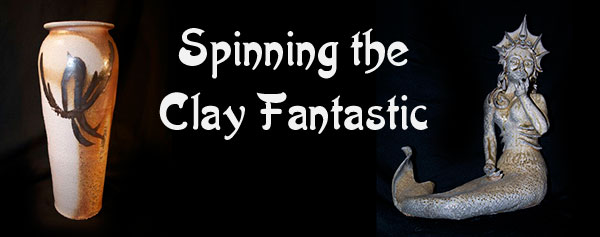 With the beginning of Autumn comes the beginning of the wood kiln firing season. This is the wood kiln, I'll have to search through some old pictures so I can show you the size of this thing. Or, I could just take more pictures throughout the next few months and show you what it's like.
With the beginning of Autumn comes the beginning of the wood kiln firing season. This is the wood kiln, I'll have to search through some old pictures so I can show you the size of this thing. Or, I could just take more pictures throughout the next few months and show you what it's like.Wood firing is pretty interesting. You fire up the kiln, and keep it firing for 5 days straight. People stoke the fire and keep it going using... wood (hehe, of course), 24 hours a day. The results are pretty interesting. Some people don't like it because the colors are kind of dull. But, I figure, any time you can set a fire legally and keep it going for 5 days straight... that's pretty darn cool.
 This is the noborigama (chambered) kiln. I think that it's also the 'salt' kiln. You can't use salt in all kilns because the salt tends to break down the walls of the kiln. Still, the results can be quite pretty... blues, greens along with the whites and natural colors you get from a wood firing.
This is the noborigama (chambered) kiln. I think that it's also the 'salt' kiln. You can't use salt in all kilns because the salt tends to break down the walls of the kiln. Still, the results can be quite pretty... blues, greens along with the whites and natural colors you get from a wood firing. Color wood. In wood firing, you tend not to rely on glazes or chemicals put on pots to get color. You use a liner glaze and maybe some decorative strokes of a paint brush, but mostly you rely on what type of wood you use to get nice results.
Color wood. In wood firing, you tend not to rely on glazes or chemicals put on pots to get color. You use a liner glaze and maybe some decorative strokes of a paint brush, but mostly you rely on what type of wood you use to get nice results. More color wood. By the end of the firing season, we should be through with all the wood in this pile.
More color wood. By the end of the firing season, we should be through with all the wood in this pile. Kindling and stoking wood. These will have to be sorted and cut into about 3 feet lengths. Stokers use this wood on the side of the kiln to keep the back of the kiln firing and hot.
Kindling and stoking wood. These will have to be sorted and cut into about 3 feet lengths. Stokers use this wood on the side of the kiln to keep the back of the kiln firing and hot. More stoking wood.
More stoking wood. Here are some results from firing this kiln. The 'sculpture' in the bottom left is a bunch of pots that got stuck together in the last firing. It happens. If pottery teaches you anything, it's detachment from your treasured piece of pottery until you get it safely home. And to not have expectations... And sometimes, these 'mistakes' are pretty cool in themselves.
Here are some results from firing this kiln. The 'sculpture' in the bottom left is a bunch of pots that got stuck together in the last firing. It happens. If pottery teaches you anything, it's detachment from your treasured piece of pottery until you get it safely home. And to not have expectations... And sometimes, these 'mistakes' are pretty cool in themselves. This is an owl I made a few years ago. I think it was refired because it originally was plain white. The slight green you see is from the wood ash. Wood ash will 'melt' into a glossy, glassy green. It's highly prized amongst the potters who fire this kiln.
This is an owl I made a few years ago. I think it was refired because it originally was plain white. The slight green you see is from the wood ash. Wood ash will 'melt' into a glossy, glassy green. It's highly prized amongst the potters who fire this kiln.As the season of wood kiln firing progresses, I'll post more pictures and give more information about this fun yet laborious technique, such as why we wait until the rainy season and how hot the kiln gets. I might also be able to post pictures of the interior of the kiln when it's firing. That's always fun :D


I am loving this... cool stuff, entertainment and education, all in one!
ReplyDeleteI agree. I'm just beginning in ceramics, so this is turning into a useful resource. Thanks Marlene!!!!
ReplyDelete